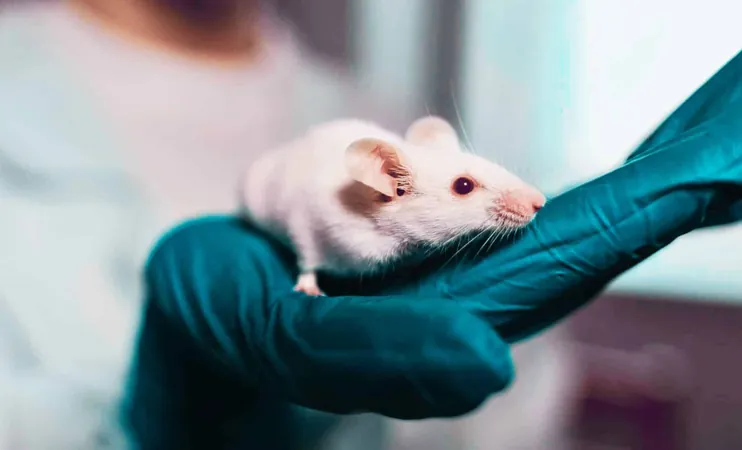
40,000-Year-Old Neanderthal DNA Injected into Mice: The Shocking Results Will Astound You!
2025-07-13
Author: Wei
Revolutionary Genetic Experiment on Ancient DNA
In a groundbreaking study, Japanese scientists have resurrected a piece of our ancient past by injecting 40,000-year-old Neanderthal DNA into laboratory mice, sparking awe and curiosity in the scientific community. This cutting-edge experiment not only showcases incredible advances in genetic editing but also provides a fascinating glimpse into human evolution.
Neanderthal Traits Resurrected
At Kyoto Prefectural University of Medicine, researchers led by Dr. Ako Agata and Dr. Tadashi Nomura utilized CRISPR technology to introduce a specific gene variant known as GLI3 into laboratory mice. This gene variant is associated with ancient relatives of modern humans like the Neanderthals and Denisovans. Their remarkable findings, detailed in the journal BioRxiv, aim to reveal how ancient genes played a role in the development of skeletal traits that differentiate archaic humans from Homo sapiens.
Remarkable Changes in Mouse Anatomy
The results were nothing short of astonishing! The injected mice began to exhibit physical traits strikingly similar to those of Neanderthals. Some displayed broader skulls, while others demonstrated spinal deformities akin to scoliosis and rib changes mimicking those found in prehistoric skeletal remains. These alterations echo the unique skeletal features noted in Neanderthal fossils, such as robust rib cages and pronounced brow ridges.
A Window into Our Biological Heritage
This experiment represents a significant leap in understanding how specific ancient genes can shape skeletal formation, offering insights into the biological divergences that set early human species apart. Intriguingly, the modifications occurred without the severe developmental issues often linked with such genetic mutations, suggesting the R1537C variant possessed a more nuanced influence on the mice's growth.
Neanderthal DNA: A Lingering Legacy in Humans
Even more fascinating, the R1537C mutation is not merely a relic of the past. This ancient genetic variant still persists in modern human populations, especially among non-Africans. Research from the 1000 Genomes Project indicates that this mutation can be found in 3.7% to 7.7% of European populations, with lower frequencies observed in African groups. This enduring presence hints that some Neanderthal traits may continue to affect human biology today.
Unpacking Ancient Genetic Influences
The study also explores how this ancient variant interacts with the genetic landscape of contemporary humans. Researchers suggest that Neanderthals may have experienced less stringent developmental constraints, allowing mutations like R1537C to persist and influence distinct skeletal features. This discovery paves the way for understanding why remnants of Neanderthal traits are still observable in present-day human anatomy.




 Brasil (PT)
Brasil (PT)
 Canada (EN)
Canada (EN)
 Chile (ES)
Chile (ES)
 Česko (CS)
Česko (CS)
 대한민국 (KO)
대한민국 (KO)
 España (ES)
España (ES)
 France (FR)
France (FR)
 Hong Kong (EN)
Hong Kong (EN)
 Italia (IT)
Italia (IT)
 日本 (JA)
日本 (JA)
 Magyarország (HU)
Magyarország (HU)
 Norge (NO)
Norge (NO)
 Polska (PL)
Polska (PL)
 Schweiz (DE)
Schweiz (DE)
 Singapore (EN)
Singapore (EN)
 Sverige (SV)
Sverige (SV)
 Suomi (FI)
Suomi (FI)
 Türkiye (TR)
Türkiye (TR)
 الإمارات العربية المتحدة (AR)
الإمارات العربية المتحدة (AR)